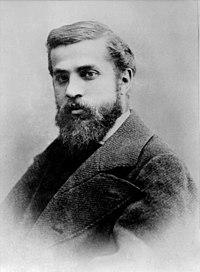
Photo from wikipedia
In this article, I argue that the spatial practices of the contemporary Jewish organisations in Barcelona’s medieval Jewish neighbourhood represent claims for public recognition. As a small and quite invisible… Click to show full abstract
In this article, I argue that the spatial practices of the contemporary Jewish organisations in Barcelona’s medieval Jewish neighbourhood represent claims for public recognition. As a small and quite invisible minority within the diverse city population, Jewish groups increasingly claim that their presence in the city should be recognised by political authorities and ordinary citizens alike. They do so through a series of spatial practices around the medieval Jewish neighbourhood, which include (1) heritage production, (2) the renaming of streets and (3) the temporary marking of urban spaces with Jewish symbols. I have grouped these practices under the umbrella concept of ‘place-recovering strategies’ because all of them attempt to ‘recover’ the lost urban environments inhabited by their Jewish predecessors before they were expelled from the Iberian Peninsula in the fourteenth and fifteenth centuries. By recovering I do not mean a mere passive restoring of urban spaces and places but rather a creative process in which historical narratives and myths of the past play a crucial role. Drawing on qualitative fieldwork, I argue that these place-recovering strategies are part of a quest for the visibility, legitimacy and recognition of Jews.
Journal Title: Social Inclusion
Year Published: 2020
Link to full text (if available)
Share on Social Media: Sign Up to like & get
recommendations!